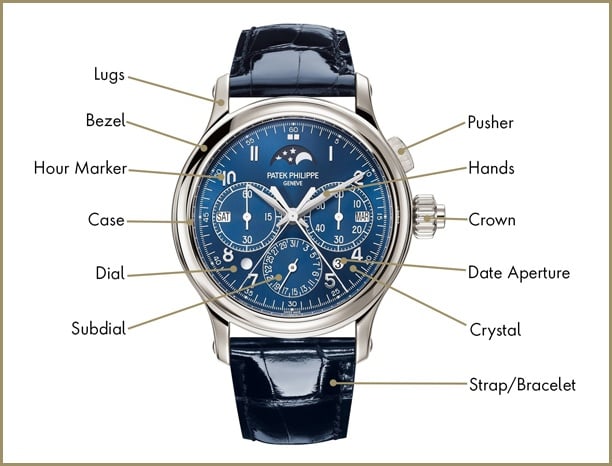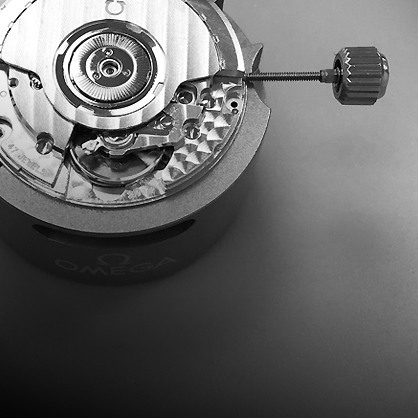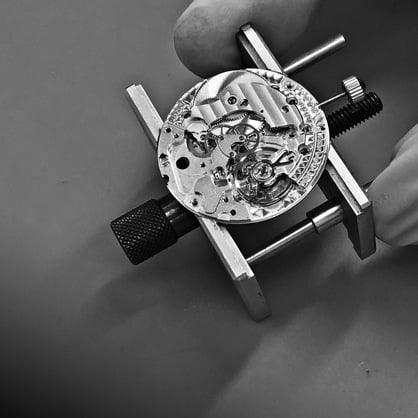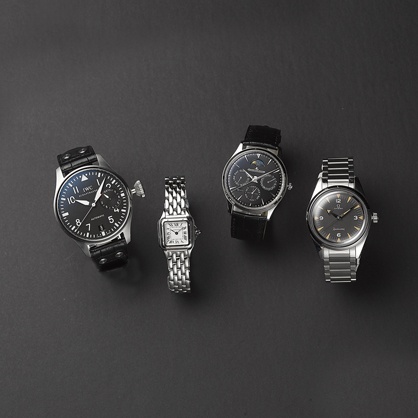Watch Anatomy
Your luxury timepiece is the product of exquisite craftsmanship. Each watch is made up of hundreds of intricate watch parts, making it both functional and aesthetically appealing.
Understand what makes your watch tick, by learning the anatomy of a watch:

Bezel
The bezel is the ring around the case of the watch that can secure the crystal. Many bezels can rotate either uni- or bi-directionally – these are used as a function to measure elapsed time, often for diving. They can also be decorative, and some are embellished with precious gemstones or diamonds.
During the 1950s, when diving watches began to feature rotating bezels, brands including Blancpain and Rolex started to introduce watches that would then become the blueprint for diving watches that followed.
Case
The case is the watch housing – it holds the movement in place and helps to protect it from dust, damp and knocks. It can be made from different materials and comes in a variety of shapes. The case is often what makes a watch visually appealing to a buyer.
Exhibition Case Back: an exhibition case back is a transparent material added to the back of a watch to display its inner workings.
Crystal
The crystal is the transparent part of the watch, also known as the glass or the lens. It covers and protects the face of the watch. The three main types of material used in watchmaking are synthetic sapphire, mineral, and acrylic.
If the crystal gets damaged, usually the entire crystal would need to be replaced. However, if the crystal is made from acrylic resin, some small scratches can be buffed out.
Crown
The crown, also known as the winding crown, is connected to the movement via the crown stem and is used to make adjustments, such as changing the time, date and other functions. In mechanical watches it is also used to wind the watch.
Particularly on watches water-resistant to over 100m, the crown has rubber gaskets which protect the inner workings of the watch from moisture and dust.
Date Aperture
A small window on the watch dial, simply displaying a number representing the day of the month on the dial. The date is commonly set by the wearer using the crown on the side of the watch. Most calendar complications need to be manually corrected at the end of months that don’t have 31 days. Some date windows also include the day, month and year in written or numeral form.
Dial
The dial consists of the hour markers and hands on the watch face, along with the aperture – these are the parts which display the time and date. Dials come in a variety of shapes and materials.
Subdial: the subdial is a small dial set into the main watch dial, it’s used to display additional complications like a chronograph or seconds.
Hands
The hands are thin shaped pieces of metal anchored to the centre of the watch face. They move around the dial, pointing to the hour markers to indicate the time. Baton, Sword, Feuille, Breguet and Skeleton are all popular shapes of watch hands - in high horology, the hands of a watch are often synonymous with a particular brand.
Most mechanical watches have three hands, one each for the hours, minutes and seconds. Very early watches relied on just one hour hand alone to indicate the time, while a grand complication can have five hands or more.
Hour Marker
The hour markers are the labels on the watch face, indicating the time. They are often displayed as Roman numerals or numerical digits, but in more modern designs, the hour markers are indicated using various symbols or jewels.
Lugs
The lugs are the case attachment that allows the strap or bracelet to be attached to the watch case. Measuring the distance between the lugs will help ascertain the width of the strap required if you need a new strap on your watch.
Strap or bracelet: the strap, also known as the watchband, is a leather, rubber or fabric attachment which secures the watch to the wrist. Metal attachments are known as bracelets.
Movement
The movement is the heart of any watch. Its purpose is to turn stored energy into regulated time and it powers the watch hands. There are three main types of movement: mechanical, automatic mechanical and quartz.
Discover more about the different types of watch movements.
Pusher
The pusher is similar to the crown. It is a button on the side of the watch that controls functions like the chronograph or date adjustment. Chronograph watches typically have two buttons, one above and one below the crown.
Rotor
Also known as the Oscillating Rotor, Oscillating Mass, or Oscillating Weight, the rotor is the part of an automatic watch that is responsible for winding the mainspring. The movement of the wearer’s wrist provides the energy to the rotor.
The self-winding mechanism was invented by Swiss watchmaker, Abraham-Louis Perrelet around 1770. It is used to power automatic watches.
Watch Guides
Discover more about watches.
Watch CLP Page


